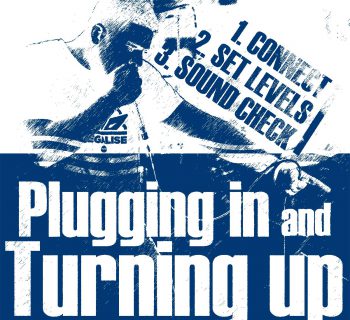Written by Archangel
1. Dynamic Duo - Coil and Magnet
The SM58 is the industry standard vocal mic. The company that makes it, Shure, designed it specifically for vocals (in particular, vocals in a live situation). The SM58 is a dynamic mic, which means that instead of using a battery or external power source, it uses something called Electromagnetic Induction (EMI). In other words, it generates an electrical signal by using a moving coil and a magnet.This kind of dynamic microphone works exactly the same as a speaker, but in reverse. Instead of the cone pushing air to make the sound, you push the air to move the cone. The movement of the cone (which is attached to a coil of copper) makes the coil move back and forth. The magnet is fixed in the centre of the coil and is stationary. As the coil moves back and forth, a small electric current is induced in the coil by the magnetic field of the magnet.
This is why you need a preamp for a mic. The preamp boosts the signal coming from the coil (which is extremely weak) up to a level that is usable by recording devices/soundcards (line level). But this is going beyond the scope of this article.
2. Don't stand so (close to me)
Now, to tackle the breath noise thing - the good ol' mic technique. I will start by pointing something out. On the convention '03 DVD, TyTe talks about a Web site which tells you not to:
"do P, T, or B sounds directly into the mic, or touch the mic to your lips."
Everyone had a good chuckle at how this person must know nothing. Well, as far a recording nice clean vocals, this is absolutely true.
P, T, and B sounds are known as plosives. These are sounds that when made, produce a burst of air from the mouth. Good for creating that punchy kick or snare, **** for getting a clean recording. If you want to hear a proper studio recording of beatboxing with proper mic technique, listen to the recordings on Shlomo's site!
Why is this? All mics have something called a max SPL rating. SPL stands for sound pressure level. This is the maximum pressure that the mic diaphragm (speaker cone) can handle before distorting the sound. The SM58 has a max SPL of around 145 decibels. That's pretty damn high! But when you explode air out of your mouth, less than an inch away, this will distort the signal. Also, when you bring the sound source (your mouth in this example) within about an inch of the mic you get an anomaly know as the proximity effect. This is when the mic actually boosts the bass of the signal. This is why the kick drum sounds heavier and bassier through the mic, rather than on your own.
On the Convention '03 DVD, Nino G does a beat which sounds like a nicely distorted drum kit. It is purely the affect of the mic signal distorting.
As Mark SPLINTER said, EQ and compression can be used, but these processes are normally applied after the initial recording. Although, a little bit of compression during the recording (just to control spikes in the level) is recommended.





